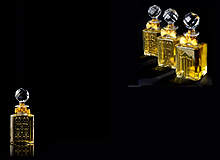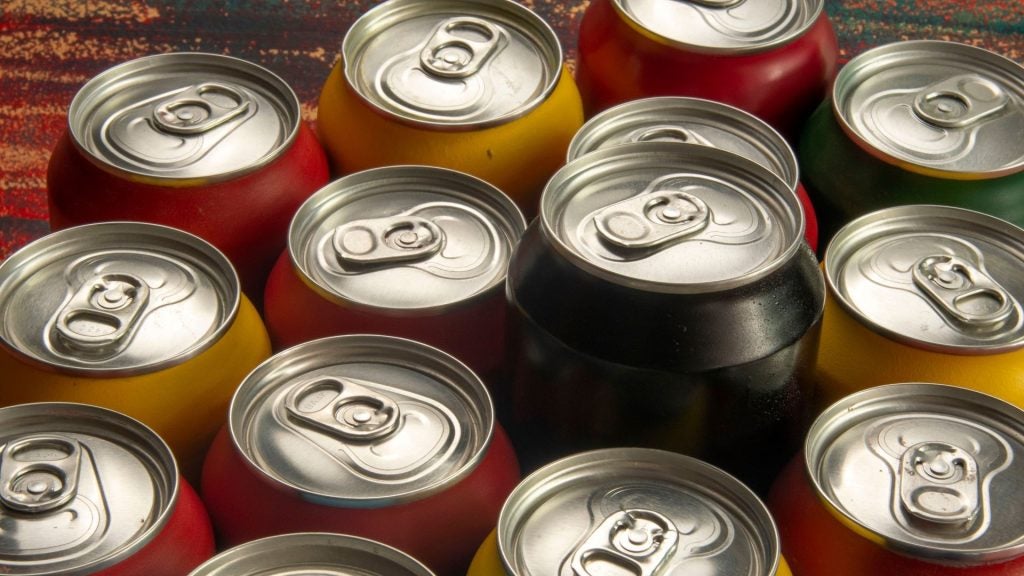
Medal winner at the Great Exhibition of 1851, Grossmith earned a Royal Warrant and in 1893 produced a special fragrance for Her Majesty Queen Mary, grandmother of Queen Elizabeth II.
A 21st-century remastering of the Grossmith brand has captured the essence of a distinguished family of scents using original formulations. A prestige brand image owes much to the packaging style that gives a reverential bow to its predecessor.
For Simon Brooke, the great-great grandson of founder John Grossmith, every component of the ‘special’ collection and the ‘standard’ range had to strike the right note. They are produced with ultimate luxury in mind and without compromise to the cost of the materials used for the packaging and the scents.
For continuity, the new decorative bottle designs, cartons and labels have used many of the visual cues and motifs that placed their forbears in a league that was dominated by French perfume houses. The target audience for the relaunched Grossmith is, as it always has been, discerning international audiences. That time-honoured phrase, ‘If you have to look at the price tag, you can’t afford it’ has never been more apt.
The unquestionably gorgeous final result warrants the high price, believe the brand owners, husband and wife Simon and Amanda Brooke. For them and their customers, ‘elegant and exquisite’ must be the first and lasting impression.
See Also:
Elegant fragrances remastered
How well do you really know your competitors?
Access the most comprehensive Company Profiles on the market, powered by GlobalData. Save hours of research. Gain competitive edge.

Thank you!
Your download email will arrive shortly
Not ready to buy yet? Download a free sample
We are confident about the unique quality of our Company Profiles. However, we want you to make the most beneficial decision for your business, so we offer a free sample that you can download by submitting the below form
By GlobalDataThe fine fragrance formulations from more than a century ago have been remastered to be faithful to the originals while meeting latest regulations. Similarly, the packaging – full of echoes of the past – was reinterpreted according to the demands of international logistics, retail environments, consumer aesthetics and manufacturing technology.
Grossmith Mark II aspires to the Made in England tag. But because of a lack of particular technologies and skills in the UK China has gained a share of the packaging production, although it is closely managed by a UK-based company.
Launched in London in October 2009, the standard trio of fragrances can now be found in the city’s prime outlets of Roja Dove Haute Parfumerie, Harrods, Fortnum & Mason and Les Senteurs, and selected stockists across the country.
A year on, exports account for 95% of sales, with important markets in the Middle Eastern states and emirates of Qatar, Oman, Dubai and Bahrain. More recently, Grossmith moved into Belgium and The Netherlands, launching exclusively at Senteurs d’Ailleurs in Brussels, and Lianne Tio Parfums, of Rotterdam, and is about to launch in Italy, Germany and the US.
The remastering of Grossmith shows a deep understanding of what made the brand ‘precious’ back then: its reputation for excellence. No less is expected of the modern revival.
For the signature Grossmith crystal Baccarat Flacon range, the family worked with Maison Baccarat and Holmes & Marchant to create new crystal flacons, reusing the original moulds, produced in 1919 for Grossmith. Each individually numbered flacon is etched with pure gold in a contemporary interpretation of original Grossmith designs. Made to order, the first set was sold to Middle Eastern royalty.
The three scents are presented in a white wooden lacquered box hand-made by Carrs of Sheffield, which in turn is protected by hand-made display packaging by MM Bell. The design was inspired by the facetted shape of the crystal flacons. Refills for the special concentrated perfume have aluminium packaging.
Grossmith rebrand
Brand design company Holmes & Marchant was brought in to redesign and relaunch the vintage Hasu-no-Hana, Phul-Nana and Shem-el-Nessim fragrances for Grossmith. First launched between 1888 and 1906, Hasu-no-Hana is named after the Japanese Lotus Lily, Phul-Nana describes a bouquet of India’s choicest flowers, and Shem-el-Nessim is a ‘Scent of Araby’ named after an Egyptian spring festival.
Holmes & Marchant chairman Andrew Doyle says: “The materials we had for inspiration were an original bottle mould for a Baccarat crystal bottle as well as old photographs, advertising and bottles from the Grossmith archive.”
The Brookes built a collection of memorabilia over several years. The idea to revive the brand sprang from Simon’s interest in genealogy, which led to a series of finds from within the family.
“We wanted the look of these items to run through our designs, yet to create something new, clean and modern, inspired by some of today’s greatest perfume success stories – Chanel, Jo Malone, Diptyque – where attention to detail is key,” says Doyle.
The company went to work on two ranges to launch: the three fragrances in Baccarat crystal bottles, and the same scents in glass bottles.
The antique Baccarat bottles were where the project began, as the inspiration for both ranges. Grossmith was traditionally a very fragrant and opulent brand and historically used bright colours on packaging to convey the Middle and Far Eastern origins of its ingredients.
“We made elements much more subtle to enable Grossmith to establish a flexible brand identity with this first launch and more easily develop other products in the future,” says Doyle. “The new colour palette has used predominantly gold, regal blue and white – giving a classic yet opulent feel.
“The Baccarat range that resulted made slight modifications to the original dressing of the flacons, and replaced the labels that had once covered the front with a fine etched pattern using pure gold. Original patterns are replicated on the presentation box lining too – a reusable piece of identifiable brand design that could be taken into future products.
“The glass bottles were designed to look luxurious and to reference the crystal bottles, but not to look too similar, as the price points for each range would be very different. Logos and typeface were inspired by writing found on old fragrance cards and helped keep the Art Deco ‘feel’ of the old bottles.”
The resulting glass bottle was ‘reeded’, creating a vintage, handcrafted look, while its oval footprint follows the shape of the original Grossmith ‘standard’ bottle. Other aspects of the design were inspired by the Baccarat crystal bottles: each bottle has a square label with chamfered corners (technically an octagon), based on the footprint of the Baccarat bottles. The finger cap on the bottle lid also references this shape, as do the display cartons and even the blotters onto which the perfume is sprayed for customers to try in store.
From design to manufacture
Stölzle-Flaconnage (STO) was chosen to produce the glass bottles for the ‘standard’ range, in the UK at Knottingley. The town in West Yorkshire has a famed and long-held reputation for glass packaging production.
Each perfume comes in 100ml and 10ml and eaux de parfums in 100ml and 50ml. Simon Brooke set the company quite a challenge, says Mark Devonald Smith, sales director for perfumery and personal care: “He needed a prestigious bottle for the revived fragrance; but the production run would be low volume and the budget was very tight. Tooling is always expensive, and the production requirements of a high quality design can be demanding.
“With any project, but particularly in this case, the client has to grasp the parameters of the glass moulding process, what can be achieved, and what the economics are. We at STO have to understand the client’s needs, what is paramount about their product vision and how it can be realised in terms of the finished bottle.”
As a side note, there was a serendipitous link with the past in Simon Brooke working with STO: Mark Devonald Smith’s father worked with the original Grossmith bottles.
Grossmith has mostly achieved its aim to use local UK expertise. The overcaps were manufactured by PlusImage, of Exeter, while Barringtons of York produced the perfume blotters. London-based Solways, printed the large point-of-sale blotters with descriptions of the perfume. The pumps, which must be reliable, were supplied by the UK arm of Emsar, a global company and part of Aptar Group. Components for the standard range sourced in China include bottle labels and rigid outer packaging, with production overseen in person by Grossmith’s agent Source2Supply.
Offshore labour was the only option to make the necessarily intricate manual processes economically viable, explains Paul Elias, director and owner of Source2Supply, which is responsible for realising the vision for high-quality rigid packaging. It takes more than 50 separate pieces of paperboard, and is ‘by far the most demanding packaging’ his company has ever had to deal with, he says.
The very expensive finishing materials included lining papers, which were made in Germany and sent to Hong Kong, close to where the products were assembled. Elias explains that, as with every Chinese factory it works with, Source2Supply selects it for its technical capabilities and carries out regular audits to ensure it meets high ethical standards. Nothing is left to chance.
Grossmith’s next step
Grossmith plans to extend its market worldwide and to develop new products that may use original formulations or creative perfumery. A certainty for the Brookes is that their company’s distinctive brand and packaging image is entirely consistent with its niche position and will continue to distinguish it from others in this market.
“I believe my ancestors would be proud of what we have done to revive the business and of how we are working to recover its position as a powerful influence in the world of perfume and luxury,” says Simon Brooke.







